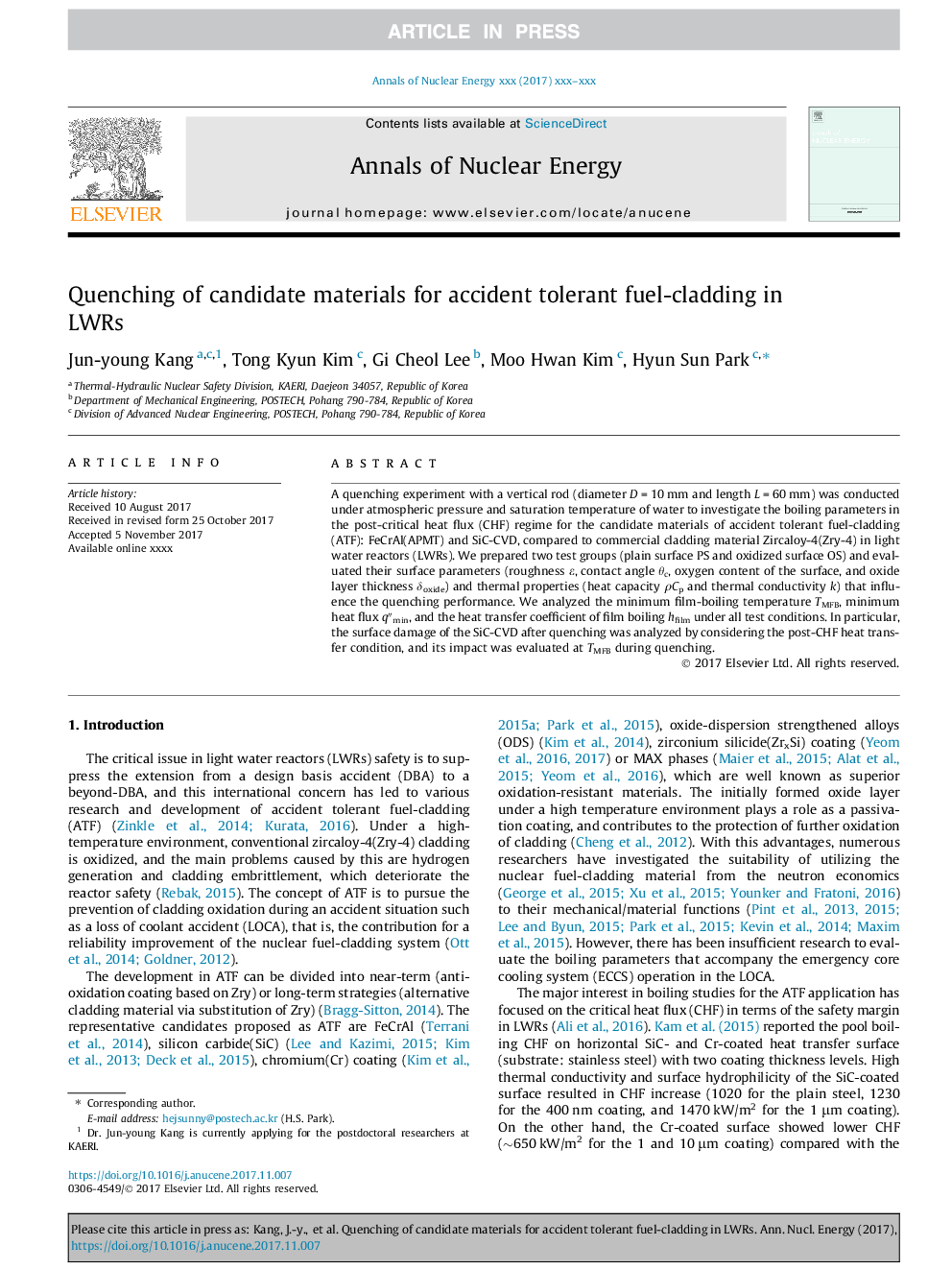| Article ID | Journal | Published Year | Pages | File Type |
|---|---|---|---|---|
| 8067302 | Annals of Nuclear Energy | 2018 | 14 Pages |
Abstract
A quenching experiment with a vertical rod (diameter Dâ¯=â¯10â¯mm and length Lâ¯=â¯60â¯mm) was conducted under atmospheric pressure and saturation temperature of water to investigate the boiling parameters in the post-critical heat flux (CHF) regime for the candidate materials of accident tolerant fuel-cladding (ATF): FeCrAl(APMT) and SiC-CVD, compared to commercial cladding material Zircaloy-4(Zry-4) in light water reactors (LWRs). We prepared two test groups (plain surface PS and oxidized surface OS) and evaluated their surface parameters (roughness ε, contact angle θc, oxygen content of the surface, and oxide layer thickness δoxide) and thermal properties (heat capacity ÏCp and thermal conductivity k) that influence the quenching performance. We analyzed the minimum film-boiling temperature TMFB, minimum heat flux qâ³min, and the heat transfer coefficient of film boiling hfilm under all test conditions. In particular, the surface damage of the SiC-CVD after quenching was analyzed by considering the post-CHF heat transfer condition, and its impact was evaluated at TMFB during quenching.
Related Topics
Physical Sciences and Engineering
Energy
Energy Engineering and Power Technology
Authors
Jun-young Kang, Tong Kyun Kim, Gi Cheol Lee, Moo Hwan Kim, Hyun Sun Park,
